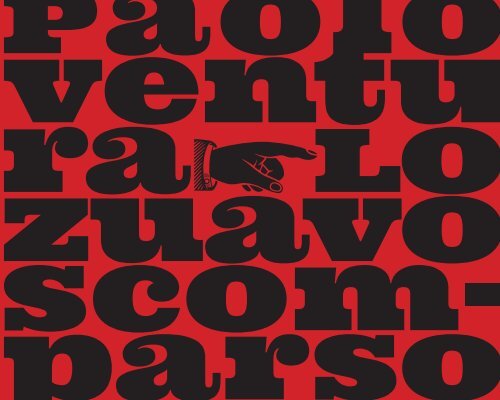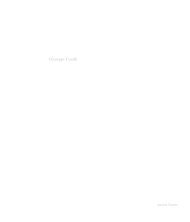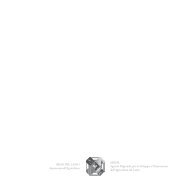lo zuavo scomparso
lo zuavo scomparso
lo zuavo scomparso
- No tags were found...
Create successful ePaper yourself
Turn your PDF publications into a flip-book with our unique Google optimized e-Paper software.
colla
Pao<strong>lo</strong> VenturaLo <strong>zuavo</strong><strong>scomparso</strong>a cura di / curated byMarco De<strong>lo</strong>gucon una poesia di / poem byValerio Magrelli
per / toPao<strong>lo</strong> Venturadi / byValerio Magrelli
A photographic […] daemonPaul ValéryUn demone […] fotograficoPaul ValéryPrestigiatori e zuavi,spazzacamini e cinema,intonaci scrostati e antiche insegne,androni e tirassegni,vicoletti e terrazze,terrazze.Terrazze in una lucelivida - sta piovendo?Forse ha appena finito,o inizia proprio adesso(vedi qualche passantecon la testa incassata fra le spalleche se ne va, di spalle).E quelle case livide.Non è fotografia, ma skiagraphía,ossia “pittura d’ombre”che erodono la luce:ossido d’ombra.Magicians and gypsies,chimney sweepers, movie houses,flaked walls and age-old signs,crusty walls and time-worn signs,seedy stairwells and shooting galleries,alleys and terraces,terraces.Terraces in a bruisedlight - is it raining?Maybe the rain’s just stoppedor started...(See men, heads buriedbetween their shouldersturn their backsand walk away).And those bruised houses...This isn’t photography, but skiagraphy,namely, “painting in shadows”that erode light:shadow-oxide.
Uno Zuavo arriva a Roma per visitare la città.Il decimo giorno scomparve.Qualche d’uno <strong>lo</strong> vide entrare in un caffè.Altri <strong>lo</strong> videro entrare in un parco.Del<strong>lo</strong> <strong>zuavo</strong> però nessuno seppe più nulla.A Zouave arrives in Rome to visit the city.On the tenth day he disappears.Someone sees him entering a café.Others see him going into a park.Nobody, however, hears any more of him.
5 febbraio
6 febbraio
7 febbraio
8 febbraio
9 febbraio
10 febbraio
11 febbraio
13 febbraio
14 febbraio
Marco De<strong>lo</strong>gu & Pao<strong>lo</strong> VenturaConversationabout Rome
M: Pao<strong>lo</strong> nel tuo lavoro e anche nell’unica foto “vera”, Romaè senza tempo, forse vicina alla Roma del Risorgimento, allaRoma attraversata da qualche <strong>zuavo</strong>.Vedo un perdersi nella città, dopo aver visto te perderti neltuo studio.P: Certo come no!M: A Anghiari tra modellini, polaroid, manichini, vestiti,cappelli, ti ho visto, o forse ti ho so<strong>lo</strong> immaginato, perderti. E’un tuo bisogno quel<strong>lo</strong> di scomparire?P: Personalmente non mi interessa scomparire. Anchese sono sempre stato molto affascinato dalla scomparsafisica, da Ettore Majorana a Federico Caffè. La scomparsaè straordinaria perché lascia tutto aperto, non trovandoun cadavere, si può lasciare libera la fantasia, immaginarequalsiasi cosa, mentre la morte è la morte.Mi piaceva l’idea di avere qualcuno che scompariva. Lo <strong>zuavo</strong>,l’ho scelto innanzitutto perché è una figura senza tempo, chefa parte per me di quelle figure come i preti, i carabinieri,che proprio per questo <strong>lo</strong>ro non cambiare li puoi mettere inqualsiasi luogo, in qualsiasi tempo e restano sempre uguali.Hanno questi abiti che diventano dei costumi, come il c<strong>lo</strong>wn.Mi piacciono queste figure che vivono un non tempo.M: Ma oltre alla “scomparsa” l’elemento centrale del tuo lavoroè il rapporto con la narrazione, la partenza dalla narrazione. InWinter Stories ci sono i racconti di tua nonna, la Milano dellaguerra partigiana, la volante rossa; è un lavoro che parte da unanarrazione diretta, di sangue addirittura, e qui a Roma invecenon c’è nessuna narrazione, è questo il salto che mi interessa.M: Pao<strong>lo</strong>, in your work and also in the single “real” photo,Rome is timeless, perhaps c<strong>lo</strong>se to Risorgimento Rome, aRome with a few Papal Zouaves on its streets.I can see you getting <strong>lo</strong>st in the city, after having seen yougetting <strong>lo</strong>st in your studio.P: Of course!M: I saw you, or perhaps just imagined you, getting <strong>lo</strong>st inAnghiari, among models, Polaroids, mannequins, c<strong>lo</strong>thes,hats. Do you feel the need to disappear?P: Personally, I’m not interested in disappearing, althoughI’ve always been fascinated by the physical disappearance of aperson, from Ettore Majorana to Federico Caffè. Disappearingis extraordinary because it leaves everything open; withoutthe discovery of a body the imagination is free to envisageanything at all, whilst death is death.I liked the idea of having someone who disappeared. I chosethe figure of the Papal Zouave because it is a timeless one,be<strong>lo</strong>nging to a group that includes priests and carabinieri,whose unchanging nature al<strong>lo</strong>ws them to be inserted in any<strong>lo</strong>cation and time and remain the same. They have thesec<strong>lo</strong>thes that become costumes, like a c<strong>lo</strong>wn. I like these figuresthat inhabit a non-temporal time.M: But in addition to the theme of “disappearance”, the centralelement of your work is the relationship with narrative, thedeve<strong>lo</strong>pment of narrative. Winter Stories contains your grandmother’stales, Milan before the partisan war, the Volante Rossa movement; itis a work that deve<strong>lo</strong>ps a direct and even b<strong>lo</strong>ody narrative, but here inRome there is no narrative. This different approach intrigues me.
Tu arrivi a Roma tra i tuoi ricordi, i tuoi vecchi lavori, mettite stesso nelle fotografie, e provi qualcosa di nuovo. Mi piacemolto anche perché oggi io non sono più così malinconicocome un tempo, il vecchio mi interessa di meno, mi interessadi più la novità dell’operazione.P: Io lavoro sulla memoria ma in realtà ho a che fare più con lafantasia e l’immaginazione, perché la memoria ha già una suastruttura, e a me non serve quella struttura, ne’ mi interessa.Non mi interessa ricreare mondi passati come se fossi davverostato negli anni 50 a Milano. Mi interessa invece prendereun’atmosfera e costruirci sopra con la fantasia. Perché certeatmosfere ci sono ma poi in realtà non sono così, sono deimondi contradditori in cui le epoche si contraddicono avicenda. Più che rifare un mondo che è già esistito, preferiscoinventarne un altro, che non ho visto. Il fatto di ambientar<strong>lo</strong>nel passato mi da’ la libertà di raccontare storie in modo menopreciso. Sono più libero, ci sono meno compromessi perchécostruisco un passato che diventa una scatola in cui metterei miei oggetti, ed è molto comodo. E non vuol dire che sononostalgico ne’ romantico. Costruisco un altro mondo che èil mio mondo, perché non c’è dubbio che il mio mondo siè nutrito di certe immagini! Da qualcosa si deve partire percostruire un mondo immaginario.M: Sono d’accordo con te, anche io non ho nessunromanticismo, da questo punto di vista, e neanche il sensodi una memoria stantia o polverosa. Ho avuto dei lutti fortinella vita. Ma guardo avanti. Per me è molto importante tuttoquel<strong>lo</strong> che è passato, però penso costantemente a quel<strong>lo</strong> chesarà il futuro, con un’analisi precisissima del passato. Per me èfondamentale l’azione passato-futuro, cioè verso il futuro.You arrive in Rome among your memories and old works,you put yourself in your photographs, and you try somethingnew. I like that very much, partly because I’m no <strong>lo</strong>nger asmelancholy as I once was, I’m less interested by the old andmore by the newness of the operation.P: My work focuses on memory, but actually it has more to dowith imagination and fantasy, as memory already has its ownstructure, and I don’t need that structure, nor am I interested in it.I’m not interested in recreating past worlds, as though I reallywas in Milan in the 1950s. What I am interested in is taking anatmosphere and using my imagination to build on it. Becausethere are certain atmospheres, but they are not actually like thatin reality, there are contradictory worlds in which the periodscontradict each other. Rather than recreating a world that hasalready existed, I prefer to invent another, which I have notseen. The fact that I set it in the past gives me the freedom torecount stories in a less precise manner. I am freer, there arefewer compromises because I build a past that becomes a box inwhich I place my objects, and it is very convenient. That doesn’tmean that I’m nostalgic or romantic. I build another world thatis my world, because there’s no doubt that my world has beennurtured by certain images! In order to build an imaginaryworld you have to start somewhere.M: I agree with you, I don’t subscribe to romanticism eitherin that respect, nor to any sense of fusty or dusty memory. Ihave suffered some serious <strong>lo</strong>sses in my life, but I <strong>lo</strong>ok ahead.Everything related to the past is very important to me, but Iconstantly think of what the future will be, by meticu<strong>lo</strong>uslyanalysing the past. The past-future action, i.e. moving towardsthe future, is fundamental for me.
P: Oppure annulli il passato e il futuro e crei un’altradimensione, che forse è ancora più interessante!M: Se vogliamo parlare di Rome Commission, tutto questo èancora più importante perché Roma è intrappolata dal passatoe anche l’idea del monumento non monumento è ormai undiscorso vecchissimo, perché è chiaro che Roma è la suamonumentalità. E tutto questo <strong>lo</strong> abbiamo già affrontato conGuy Tillim, come fi<strong>lo</strong> conduttore. Come sai Alec Soth si èinventato una cosa tutta sua, partendo da John Keats, e forseanche il suo era un lavoro senza tempo.L’importante è non restare intrappolati a Roma e non averpaura neanche del passato.P: Tra l’altro il mio non è un passato romano tipico, è unpassato di un’ epoca che non è importante, perché è indefinita.Lo <strong>zuavo</strong> scombina tutto perché non appartiene all’epocaper cui viene fotografato, è uno che si è travestito, sembrauna figura carnevalesca. In realtà <strong>lo</strong> <strong>zuavo</strong> vestito così nonappartiene al mondo che gli sta intorno.M: Perché, secondo te, di che mondo è?P: Un mondo un po’ più ottocentesco. Di fatto l’immaginariopopolare del<strong>lo</strong> <strong>zuavo</strong>, vestito così, è risorgimentale. Mentrequi è qualcosa di più moderno, quasi qualcosa di futuristico.Anche perché non è detto che il futuro vada sempre versocose future, potrebbe anche tornare indietro. Basta vederela gente. Ieri ho visto un ragazzo che sembrava uscito da unfilm degli anni 70.Lo <strong>zuavo</strong> mi serve per creare un sogno, che per me è sempre ladimensione più interessante. Perché nel sogno le figure le puoiP: Otherwise you can obliterate the past and the future and createanother dimension, which is perhaps even more interesting!M: If we consider the Rome Commission, these aspects are evenmore important, because Rome is trapped by the past and theidea of a monument that is not a monument has also becomean old one, as it is clear that Rome is its own monumentality.We have already investigated all these aspects with Guy Tillim,who made them his theme. As you know, Alec Soth inventedsomething very personal, inspired by John Keats, and perhapshis work too was timeless.The important thing is not to be trapped by Rome nor to beafraid of the past.P: My past is not, incidentally, a typical Roman one, it is a pastof an age that is unimportant because it is undefined. TheZouave disrupts everything because he doesn’t be<strong>lo</strong>ng to theperiod in which he is photographed, he is wearing a costume,like a carnival figure. The Zouave, dressed like that, does notbe<strong>lo</strong>ng to the world around him.M: Why, what world do you think he be<strong>lo</strong>ngs to?P: A somewhat nineteenth-century world. In popular imagerythe figure of the Zouave, dressed like that, be<strong>lo</strong>ngs to theRisorgimento. However, here he is something modern, almostfuturistic. Also because the future does not necessarily movetowards future things, it could also go backward in time. Just<strong>lo</strong>ok at people. Yesterday I saw a boy who <strong>lo</strong>oked as thoughhe’d stepped out of a 1970s film.I used the Zouave to create a dream, which for me is always themost interesting dimension. Because in dreams you can put the
mettere in situazioni strane, per cui il sogno è realistico ma c’èsempre qualcosa di distorto... apri la porta e c’è un muro... conun tuo parente che vedi so<strong>lo</strong> a Natale, ci passi una vacanza... èquesto il bel<strong>lo</strong> del sogno!Lo <strong>zuavo</strong> fa diventare un luogo, un sogno. Nel sogno tuttoè permesso, puoi prendere quel<strong>lo</strong> che ti piace e metter<strong>lo</strong>insieme. E infatti le altre figure in realtà non hanno nessunarelazione, l’unica persona che guarda nella macchina è <strong>lo</strong><strong>zuavo</strong>, gli altri sono delle comparse che camminano, come senon appartenessero al luogo.M: Due domande più generali, non tanto su questo lavoro.Quando hai deciso di iniziare a metterti dentro le foto eperché? E quanto sei influenzato dalle architetture del posto,in questo caso Roma? Perché poi qui a un certo punto c’èuno scarto, c’è una foto vera che a me piace molto. Che poi èquel<strong>lo</strong> che riporta tutto a Roma, poiché molti dei suoi luoghipotrebbero sembrare settecenteschi, ottocenteschi.P: A un certo momento mi è venuto naturale entrare nei mieiset, non l’ho deciso, l’ho fatto senza pensarci.Nel lavoro su Roma, ci sono due cose nuove rispetto al miolavoro vecchio. Innanzitutto ci sono i cieli che non ho maiavuto. Fino ad al<strong>lo</strong>ra avevo sempre avuto cieli bianchi, il cie<strong>lo</strong>l’avevo sempre annullato. Però pensando a Roma, ho pensatoal cie<strong>lo</strong> prima di tutto e così ho deciso di mettere un cie<strong>lo</strong>,di dare al cie<strong>lo</strong> un peso che prima non aveva: è una cosa cheschiaccia e l’ho fatto nuvo<strong>lo</strong>so... gli ho dato il mio cie<strong>lo</strong>. Il cie<strong>lo</strong>è fondamentale in questo caso.M: Anche io ho deciso di fotografare con la luce della luna, nonè che ci ho pensato, è stato molto naturale e neanche mi sonfigures in strange situations, so the dream is realistic but thereis always something distorted... you open the door and find awall... or you go on holiday with a relative you only ever see atChristmas... that’s the good thing about dreams!The Zouave makes a place become a dream. In dreamseverything is al<strong>lo</strong>wed, you can take whatever you like and putit together. And indeed the other figures are actually entirelyunrelated, the only person <strong>lo</strong>oking into the lens is the Zouave,the others are extras who are walking around, as though theydon’t be<strong>lo</strong>ng to the place .M: Two more general questions, not specific to this work.When did you decide to start putting yourself in your photos andwhy? And to what extent are you influenced by the architecture ofthe place, in this case Rome? Because at a certain point there is adeviation, there’s a real photograph, which I like very much. It’sthe one that brings everything back to Rome, as many of its placescould seem to be<strong>lo</strong>ng to the eighteenth and nineteenth centuries.P: At a certain point it became natural for me to enter my own sets,I didn’t make a conscious decision but did it without thinking.In the work on Rome there are two new things in respect tomy old work. First of all there are skies, which I had neverdepicted before. Up until then I’d always had white skies,I’d always b<strong>lo</strong>tted them out. However, thinking of Rome, itwas the sky that came to mind first and so I decided to showit, attributing it an importance that it hadn’t had before: it issomething that overpowers and I made it c<strong>lo</strong>udy... I gave it mysky. The sky is fundamental in this case.M: I decided to take photographs by moonlight too; I didn’thave to think about it, it was very natural and I didn’t even ask
mai chiesto perché non sia successo prima.Se la prima cosa nuova è il cie<strong>lo</strong>, la seconda qual’è?P: Infilare il coltel<strong>lo</strong> a testa in su, piuttosto che a testa ingiù, perché quando metti dentro la mano... ti tagli. Mi piacequesta sorpresa. Anche perché sai, sono partito costruendodei mondi completamente finti, con una luce finta, e pianpianino invece mi sono avvicinato alla realtà, nel senso cheho iniziato a mettere degli elementi veri. Ho iniziato con me,poi ho messo dentro anche altre cose vere, per esempio lapianta di al<strong>lo</strong>ro che ho davanti al mio studio. E’ la prima voltache inserisco un elemento vero nella finzione, è come sefacessi un percorso opposto.M: Prima un elemento vero in un set costruito e poi un setvero sul quale intervieni.P: Si, è la prima volta che inserisco un elemento vero in un setcompletamente finto. Mi piace perché nel momento in cui creoun mio mondo personale e <strong>lo</strong> definisco sono più libero e possopermettermi di esp<strong>lo</strong>rare il mondo reale con la sicurezza dipotermi rifugiare nel mio mondo immaginario, che diventa latana del topolino nel materasso.Magari poi il prossimo lavoro <strong>lo</strong> farò tutto vero. Ma èimportante? Secondo me no.M: So cosa vuoi dire, anch’io non l’ho capito del tutto perchésono arrivato alle nature bianche, ai soli neri, e adesso allaluna. C’è una spiegazione che forse però non mi interessa,preferisco lasciarmi andare, aderire da <strong>lo</strong>ntano, e poi chissà seè veramente vero.myself why I hadn’t done it sooner.If the first new thing is the sky, what’s the second?P: Driving the knife in with the handle upwards, rather thandownwards, so that you cut yourself when you put yourhand in. I like this surprise. Also because, as you know, Icommenced by building completely false worlds, with falselight, and then I gradually started moving towards reality, inthe sense that I began to insert real elements. I started withmyself, then I also put other real things into the scene, like thebay tree in front of my studio, for example. It is the first timethat I have inserted a real element in a fiction, it is as though Iwere fol<strong>lo</strong>wing an opposite direction.M: First a real element in a constructed set and then a real setfor you to manipulate.P: Yes, it’s the first time that I’ve inserted a real element ina completely fictional set. I like it because creating my ownpersonal world and defining it gives me greater freedom andal<strong>lo</strong>ws me to exp<strong>lo</strong>re the real world with the security of beingable to take refuge in my imaginary one, which becomes a sortof mouse’s nest in a mattress.Perhaps my next work will be all real. But does it matter? Idon’t think so.M: I know what you mean, I don’t completely understandhow I arrived at my white natures, my all-blacks, and now themoon, either. There’s an explanation, although it may not eveninterest me. I’d rather let myself go, be<strong>lo</strong>ng from afar, and whoknows if it’s even really true?
P: Tu dici che è vero ma potrebbe essere anche finto... perchéavresti potuto crearti un fondo e fotografare... Io cercosempre di non enfatizzare troppo il fatto che sia finto, cioè miinteressa dir<strong>lo</strong> e far<strong>lo</strong> anche vedere come <strong>lo</strong> costruisco, peròper me l’idea è poi il risultato. Che sia finto, che sia vero non èimportante... l’importante è la suggestione che si crea.M: Una cosa molto “Ventura” che mi succede ultimamente oforse mi succedeva anche sulle prime polaroid è: “Oh cavo<strong>lo</strong>sembra pittura!”. Ma non è questo l’importante...P: Sembra pittura, sembra scultura, sembra vero, sembra finto.M: Chissà quante volte te <strong>lo</strong> dicono a te che sembra una pittura...P: Si, e del pittore dicono: “ wow! sembra una fotografia”.Anche perché come ti dicevo, per fortuna il senso dellafotografia si sta perdendo completamente...il punto è il risultato.P: You say that it is real, but it could also be fake... because youcould have created a backdrop and photographed... I always trynot to put too much emphasis on the fact that it’s finished, orrather I like to say and show how I build it, but for me the conceptis the result. It doesn’t matter whether it’s finished or whether it’sreal... what matters is its resulting power to evoke.M: One very “Ventura”-like thing that I’ve experienced lately, orperhaps I’d already experienced in the early Polaroids, is the thought,“Oh goodness, it <strong>lo</strong>oks like a painting!” But it doesn’t matter...P: It <strong>lo</strong>oks like a painting, it <strong>lo</strong>oks like a sculpture, it <strong>lo</strong>oks real,it <strong>lo</strong>oks false.M: Goodness knows how many times you hear people say thatit <strong>lo</strong>oks like a painting...P: Yes, and they <strong>lo</strong>ok at the painter and say: “Wow! He <strong>lo</strong>okslike a photograph”.Also because, as I was telling you, fortunately the meaning ofphotography is being <strong>lo</strong>st completely... the whole point is the result.
Lo <strong>zuavo</strong> <strong>scomparso</strong>© Pao<strong>lo</strong> Ventura per le fotografieTesti di Marco De<strong>lo</strong>gu e Pao<strong>lo</strong> VenturaTraduzione di Sarah PontingPoesia di Valerio MagrelliTraduzione di Anthony MolinoLo <strong>zuavo</strong> <strong>scomparso</strong>© Pao<strong>lo</strong> Ventura for PhotographiesTexts by Marco De<strong>lo</strong>gu and Pao<strong>lo</strong> VenturaTranslated by Sarah PontingPoem by Valerio MagrelliTranslated by Anthony MolinoUna produzione Macroper FOTOGRAFIA festival internazionele di RomaA Macro Productionfor FOTOGRAFIA festival internazionele di RomaProgetto grafico di ZestPostproduzione di Maurizio MagliaStampato a Roma da Marchesi Grafiche Editoriali S.p.A.Graphic Design by ZestPostproduction by Maurizio MagliaPrinted in Rome by Marchesi Grafiche Editoriali S.p.A.Edizioni Punctum 2012A cura di Marco De<strong>lo</strong>guPunctum Press 2012Edited by Marco De<strong>lo</strong>guwww.punctumpress.comisbn 978-88-95410-18-0FO TOGRAFIAFestival Internazionale di RomaFO TOGRAFIAFestival Internazionale di Roma
colla







